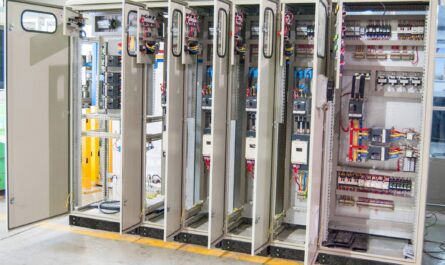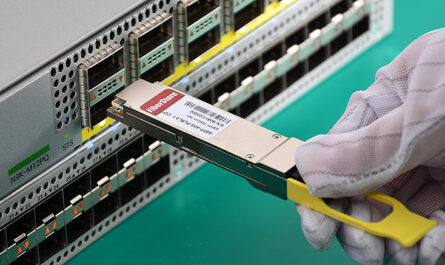What are Flat Flex Cables?
Flat flex cables, also known as flexible flat cables or ribbon cables, are a type of cable that is widely used in electronics to connect printed circuit boards (PCBs) and different components inside electronic devices. Flexible flat cables consist of a thin flexible printed circuit embedded between two flexible insulating layers, usually made from polyimide film. These cables are very thin, flexible and lightweight which makes them ideal for applications where space is limited.
History and Evolution of Flat Flex Cables
The earliest flat flex cables emerged in the 1960s as electronics became more compact and circuit densities increased. Initially made from multi-conductor ribbon bonded to Mylar substrates, early flat flex cables helped address the connectivity challenges arising from miniaturization. Through the 1970s and 80s, flat flex cables grew in popularity as new insulating and conductor materials were developed. Polyimide film soon replaced Mylar as the preferred substrate material due to its high temperature tolerance and flexibility. Conductor materials also progressed from strands of wire to etched copper foil which made manufacturing faster and more precise. By the 1990s, Flat flex cables had become a crucial interconnect technology supporting the continued miniaturization of devices like computers, smartphones, and instruments. Advancements in microfabrication allowed single-sided and double-sided flex circuits to become thinner with finer pitches between conductors. Today, flexible circuits are the backbone of connectivity inside many modern devices.
Types of Flat Flex Cables
There are various types of flat flex cables based on conductor arrangement, insulation layers and manufacturing process:
– Single-sided Cables: Have conductors on only one side of the insulating polymer layer. Used where limited I/O connections are required.
– Double-sided Cables: Conductors formed on both sides of the polymer layer, doubling the I/O count. Commonly used in devices with higher connectivity needs.
– Multi-layer Cables: Consist of multiple thin conductor-insulator-conductor layers laminated together. Support very high density cabling with additional ground and power planes.
– Twisted Pair Cables: Utilize a twisted pair design to reduce crosstalk noise interference. Suitable for high-speed data and signal transmission applications.
– Reinforced Cables: Have additional stiffener or filler layers to provide abrasion resistance and protect conductors. Used in applications with frequent flexing, folding, or abrasive environments.
– Custom Cables: Manufactured as per unique design requirements with non-standard conductor patterns, materials, or dimensions.
Materials and Construction of Flat Flex Cables
The main materials used in flat flex cables are:
– Conductors: Generally made from rolled or etched copper foil due to its high conductivity and flexibility. Other materials like aluminum alloy may also be used.
– Insulation: Thin polyimide film is primarily used as the flexible insulator due to its high heat resistance, flexibility, and dielectric strength. Other polymers like Kapton or PEEK may also be used.
– Adhesives: Cyanoacrylate or B-stage thermosetting adhesives are applied to bond the insulation layers and conductors during lamination. Epoxy or acrylate are also used.
– Protective Coatings: Thin lacquer or solder mask coatings protect the conductors and insulation from environmental damage and shorts.
Common applications of Flat Flex Cables
Some major applications of flat flex cables include:
– Consumer Electronics: Used extensively inside smartphones, laptops, tablets to connect components with rigid boards. Provide strain relief and easy assembly.
– Automotive Electronics: Connect sensors, displays, infotainment modules inside increasingly electronic vehicles reliably. Withstand vibration and extreme temperatures.
– Medical Devices: Reliably interconnect diagnostic equipment, surgical tools, implants like pacemakers due to their biocompatibility and flexibility.
– Industrial Instruments: Durable enough to connect elements in factory automation controls, large scale meters, process instruments operating continuously.
– Military and Avionics: Designed for mission critical systems onboard aircraft, vehicles operating under shock, vibration, wide thermal cycles. meet stringent reliability standards.
Advantages of Using Flat Flex Cables
– Flexibility and foldability: Can be folded, formed, bundled compactly inside devices with complex geometries and tight spaces.
– Lightweight: Much lighter than conventional cables saving on device weight.
– Durability: Repeated flexing does not damage conductors or insulation layers when properly reinforced.
– Reliability: Protected encapsulation and strain relief with bend radius control ensures long operational life.
– Cost-effectiveness: Less complex and economical to manufacture than discrete wire harnesses through automated, roll-to-roll production.
So in summary, flat flex cables address the interconnect needs of modern technology through their space-saving design, mechanical flexibility, ruggedness, and high reliability even in harsh environments. They will continue to remain an integral part of the miniaturization and engineering of electronics for the foreseeable future.
Note:
1. Source: Coherent Market Insights, Public sources, Desk research
2. We have leveraged AI tools to mine information and compile it



